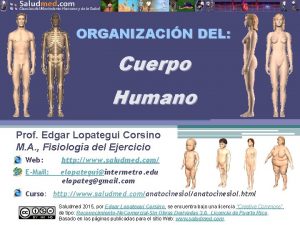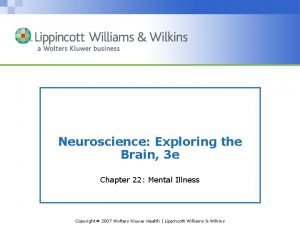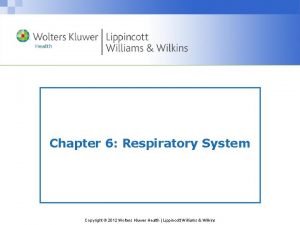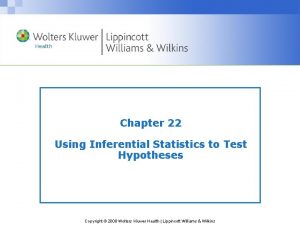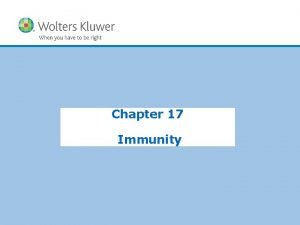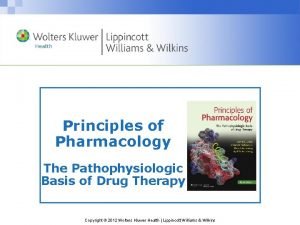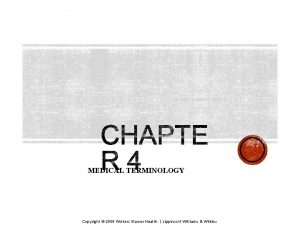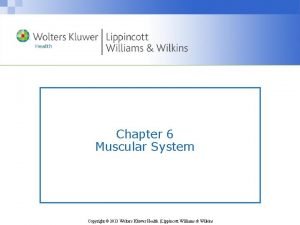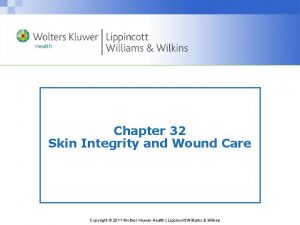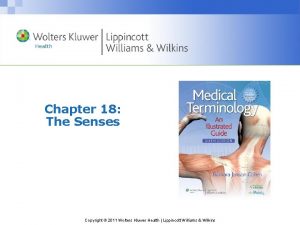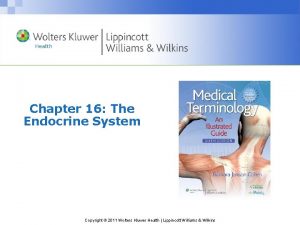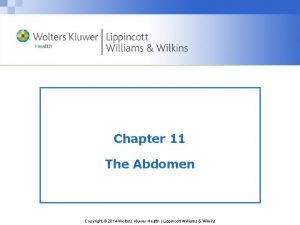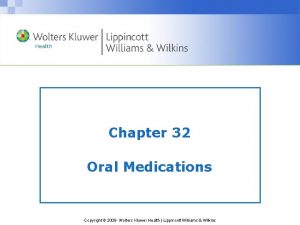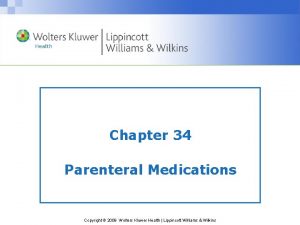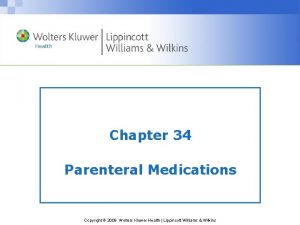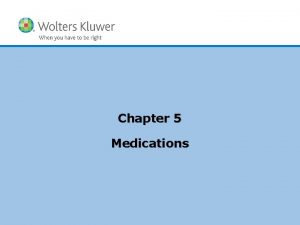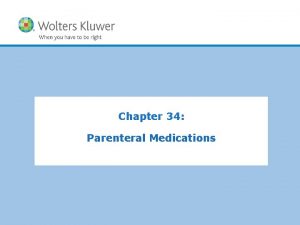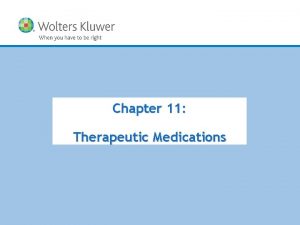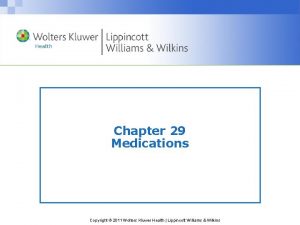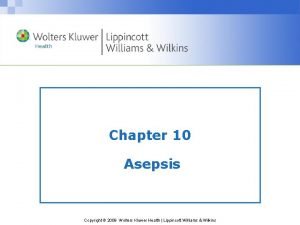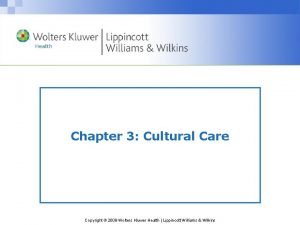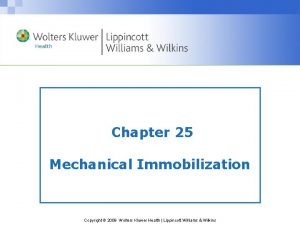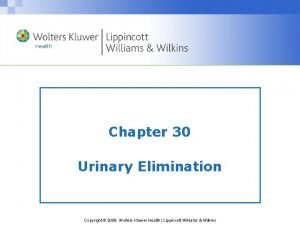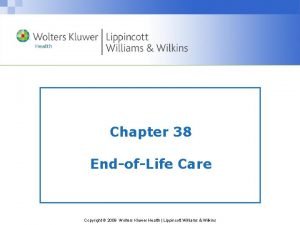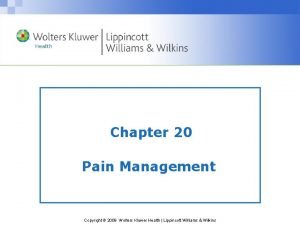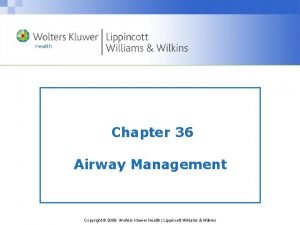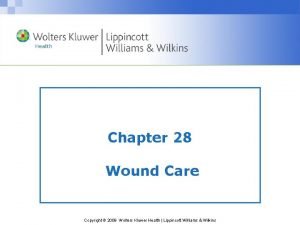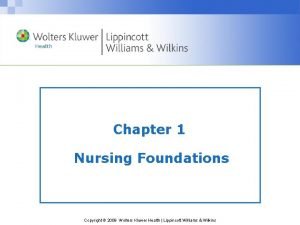Chapter 32 Oral Medications Copyright 2009 Wolters Kluwer





















- Slides: 21

Chapter 32 Oral Medications Copyright © 2009 Wolters Kluwer Health | Lippincott Williams & Wilkins

Question • Is the following statement true or false? An advanced practice nurse can write a medication order. Copyright © 2009 Wolters Kluwer Health | Lippincott Williams & Wilkins

Answer True. An advanced practice nurse can write a medication order if legally designated to do so by state statutes. Copyright © 2009 Wolters Kluwer Health | Lippincott Williams & Wilkins

Medication Orders • Lists the drug name and directions for its administration • Written on client’s medical records • Written by medical personnel, physician’s assistant, or advanced practice nurse Copyright © 2009 Wolters Kluwer Health | Lippincott Williams & Wilkins

Medication Orders (cont’d) • Components of medication orders – Drug name: trade name – Drug dose: the amount of drug to administer, prescribed using the relevant system of measurement Copyright © 2009 Wolters Kluwer Health | Lippincott Williams & Wilkins

Medication Orders (cont’d) • Route of administration: how the drug is given – Oral, topical, inhalant, or parenteral route • Frequency of administration: how often and how regularly the medication is to be given Copyright © 2009 Wolters Kluwer Health | Lippincott Williams & Wilkins

Question • The standard abbreviation for writing twice a day is? a. q. d. b. q. o. d. c. b. i. d. d. t. i. d. Copyright © 2009 Wolters Kluwer Health | Lippincott Williams & Wilkins

Answer c. b. i. d. The standard abbreviation for writing twice a day is b. i. d. ; q. d. stands for everyday, q. o. d. for every other day, and t. i. d. for three times a day. Copyright © 2009 Wolters Kluwer Health | Lippincott Williams & Wilkins

Question • Which of the following is the most common route to administer medication? a. Oral b. Topical c. Inhalant d. Parenteral Copyright © 2009 Wolters Kluwer Health | Lippincott Williams & Wilkins

Answer a. Oral The oral route is the most common route to administer medication. The topical route is used for skin application, inhalant for aerosol, and parenteral for injection. Copyright © 2009 Wolters Kluwer Health | Lippincott Williams & Wilkins

Medication Orders (cont’d) • Verbal orders: instructions for client care that are given during face-to-face conversations • Telephone orders: obtained from a physician during a telephone conversation • Documented in the medication administration record Copyright © 2009 Wolters Kluwer Health | Lippincott Williams & Wilkins

Methods of Supplying Medications • Storing medications: medications remain locked until the drugs are administered • Accounting for narcotics: federal laws regulate their possession and administration; nurses are responsible for an accurate account of their use and must keep a record of each narcotic used from the stock supply Copyright © 2009 Wolters Kluwer Health | Lippincott Williams & Wilkins

Methods of Supplying Medications (cont’d) • Ways to supply drugs: – Individual supply – Unit dose supply – Stock supply Copyright © 2009 Wolters Kluwer Health | Lippincott Williams & Wilkins

Medication Administration • Applying the 5 rights safeguards against medication errors • Calculating dosages is one of the 5 rights • Oral medications are prepared and taken to the client’s bedside in a paper or plastic cup for administration Copyright © 2009 Wolters Kluwer Health | Lippincott Williams & Wilkins

Drug Calculation Formula Copyright © 2009 Wolters Kluwer Health | Lippincott Williams & Wilkins

Preparing Medications Safely Copyright © 2009 Wolters Kluwer Health | Lippincott Williams & Wilkins

Taking Medications Copyright © 2009 Wolters Kluwer Health | Lippincott Williams & Wilkins

Medication Administration (cont’d) • Oral medications are administered by enteral tube if client cannot swallow them • Documentation is required on medication administration record • Nurses are ethically and legally responsible for reporting medication errors Copyright © 2009 Wolters Kluwer Health | Lippincott Williams & Wilkins

Nursing Implications • Nursing diagnoses – Deficient knowledge – Risk for aspiration – Ineffective therapeutic regimen management – Ineffective health maintenance – Noncompliance Copyright © 2009 Wolters Kluwer Health | Lippincott Williams & Wilkins

General Gerontologic Considerations • The body constitution affects the way medications work • The chemical properties of the medication determine the degree to which these agerelated changes influence medication actions Copyright © 2009 Wolters Kluwer Health | Lippincott Williams & Wilkins

General Gerontologic Considerations (cont’d) • Polypharmacy in older adults increases the risk for drug interactions and adverse medication reactions • Taking more than one medication cause mental changes • Enteric-coated medications should never be crushed Copyright © 2009 Wolters Kluwer Health | Lippincott Williams & Wilkins
 Wolters kluwer health
Wolters kluwer health Lippincott
Lippincott Wolters kluwer
Wolters kluwer Wolters kluwer
Wolters kluwer Synaptic integration
Synaptic integration Wolters kluwer health
Wolters kluwer health Wolters kluwer
Wolters kluwer Wolters kluwer
Wolters kluwer Wolters kluwer
Wolters kluwer Wolters kluwer health
Wolters kluwer health Wolters kluwer
Wolters kluwer Chapter 25 assessment of cardiovascular function
Chapter 25 assessment of cardiovascular function Wolters kluwer health
Wolters kluwer health Wolters kluwer
Wolters kluwer Virchow's triad
Virchow's triad Wolters kluwer pronunciation
Wolters kluwer pronunciation Wolters kluwer
Wolters kluwer Copyright
Copyright Wolters kluwer
Wolters kluwer Wolters kluwer
Wolters kluwer Wolters kluwer
Wolters kluwer Wolters kluwer ovid
Wolters kluwer ovid


